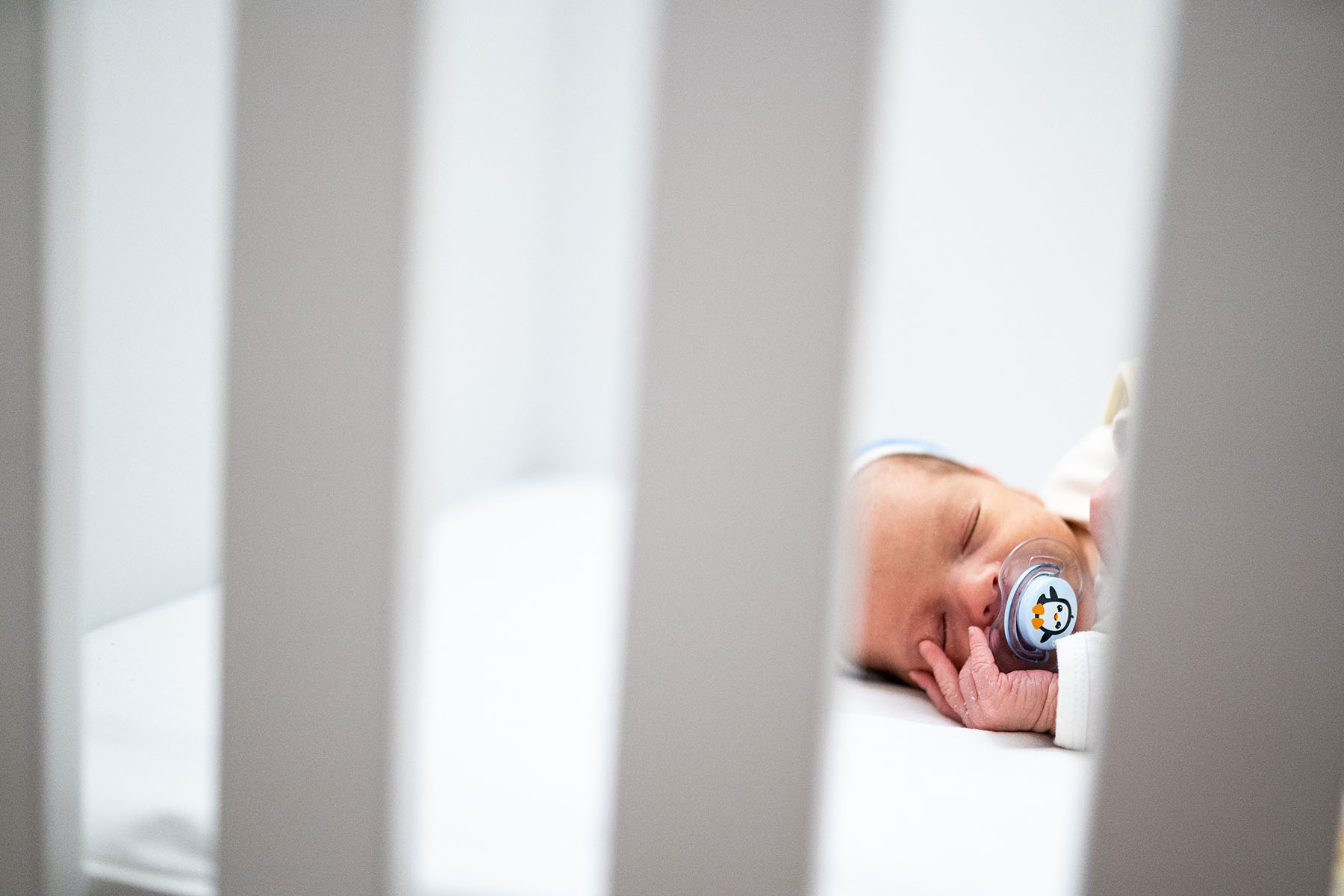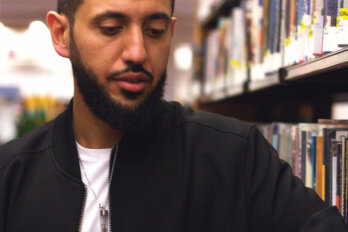One spring afternoon in 2016, I received a call at my university office from a woman who has chosen to be called Jacquie here. She knew that I was a law professor, and she was seeking help in a deeply troubling situation. Jacquie, an Indigenous woman from a Treaty 6 First Nation with close family ties to a Metis community, was in her third trimester of pregnancy and very concerned about the welfare of her child. He was due to be born in several weeks and was to be automatically separated from her by the prison system—at birth, against her strong wishes and against contemporary medical and developmental knowledge. Jacquie was incarcerated at the Pine Grove Correctional Centre in Prince Albert, Saskatchewan, and she could not afford a lawyer and had no legal representation. When she called me, Jacquie was weeks away from being forced to abandon her newborn.
The Saskatchewan Ministry of Justice, according to its website, “provides a fair justice system that upholds the law and protects the rights of all individuals in Saskatchewan.” What was about to happen to Jacquie’s unborn son, however, was neither just nor fair. Not one state actor—such as a judge or social worker—had directly considered his interests during Jacquie’s sentencing; he was, at that time, not yet born and, by Canadian law, not yet a legal person. However, there would be no consideration of his interests after his birth either. Instead, he would be automatically removed from his mother’s care according to Pine Grove Correctional Centre’s policy. This was the same policy that had been applied for decades in Saskatchewan and in most of Canada.
When I spoke with Jacquie that day in 2016, she was firmly focused on safeguarding her son’s future. Her sentence was in relation to an event that had occurred the year before: while impaired, she had sought more alcohol from a bar by showing scissors to the bartender, leading to a charge of armed robbery. She had no criminal record at the time and was remorseful and cooperative after the incident, seeking to live positively from then on. In the interval between the offence and the sentencing, she developed a good therapeutic rapport with a counsellor, completed a treatment series, and resolved not to consume alcohol in the future (a resolution she has upheld).
Following her arrest, Jacquie was initially in custody for about a month, before being released on house arrest pursuant to a recognizance order (in other words, she promised to return to court when scheduled to appear). She was under house arrest for six months leading up to her sentencing and became pregnant near the beginning of this period.
During the sentencing hearing, her counsel told the judge that Jacquie would be separated from her infant immediately after birth if she was sent to regular provincial custody. Her lawyer tried to argue for a sentence served on weekends or by lengthy house arrest. However, the judge was unpersuaded and sentenced Jacquie to thirteen months of provincial custody, which was one month less time than the prosecution had sought. Jacquie would have to give birth while incarcerated. Not only was she sentenced to time in prison but she was also sentenced to lose her child at birth.
Jacquie was looking for a lawyer for her appeal, and I tried to find her free criminal legal representation. Legal Aid Saskatchewan had not chosen to represent her on appeal, for reasons I do not know. But there was evidently no free legal aid for Jacquie. I realized that if people in her situation commonly had access to lawyers, they would be in a very different situation. Since I could find no free criminal lawyer, I decided to act for her.
As a first step, I listened to the audio recording of her sentencing. In the Canadian legal system, sentencing is meant to be an individualized process that takes into account the situation of the person being sentenced. The most relevant aspect of Jacquie’s situation in the courtroom on the day of her sentencing was the fact that she was six months pregnant. But her pregnancy was given almost no regard. All the judge said was, “And a further factor is that she is presently pregnant,” without elaboration. Even though the defence had outlined that there was going to be no place for the child in the prison, the judge listed her pregnancy as a neutral factor rather than a mitigating or aggravating one. This was apparently not the time or place for any reflection on whether Jacquie would now contribute positively to society as a mother.
The stress caused by a motion hearing likely, in part, precipitated early labour just days later. The labour might have also been related to her untreated gestational diabetes, which had been diagnosed and documented by an outside obstetrician just before her incarceration, only to be flatly dismissed as an impossibility by prison health care staff. Gestational diabetes, if untreated, presents a risk of preterm labour as well as other significant health risks to mother and child, including preeclampsia and higher risks of maternal mortality.
“I think I might be having Braxton Hicks contractions,” she said to me when I spoke with her. “I’ve felt them now and then today.” She was feeling more than Braxton Hicks, however. By the next day, Jacquie was in full labour. It is worth sharing in full how she recounts her experience of labour and delivery within the legal system:
On Thursday morning, I woke up to another day at Pine Grove Correctional Centre. Upon waking up, I was told to pack my stuff, for I would be moving to Sharber today, a privileged unit at Pine Grove. I had started feeling slight cramps, but they weren’t extremely intense. I just tried to ignore them and continue on with my day, for I had been awaiting this move since being in Pine Grove, for there is nothing but great words about Sharber and it’s the place to be in the jail. A staff member came to get me to relocate. On the way, I noted to her how I felt but quickly said it was probably Braxton Hicks, for I was only seven months and the pain was very tolerable at the time. She said to take it easy and offered to help transfer my belongings.
Upon arriving at Sharber, I was shown my cell and given the ground rules. I tried to get settled and began unpacking, avoiding my cramps. I then lay down to read, waiting for the girls to get back from programming. I also noted to them when they returned how I felt and told them I thought I was in labour. They said it was probably just stress and to try to relax. I recall giving Robin Hansen a call to tell her how I felt. My cramping was getting a wee bit more intense, and I was terrified by what was going to happen to my baby and who was going to look after him. I didn’t know exactly what was going to happen. I began to feel panicky, for I knew I received a thirteen-month sentence, and I was currently working on an appeal but was denied legal counsel. I was over-the-top stressed out about everything. Everything was building up. I felt like I had no more hope. I was feeling extremely depressed.
Later that day, after supper, I met with my caseworker. I informed her how I felt but told her it was mild. She quickly said to let her know if I needed to go down to medical to see nursing staff. She seemed to be concerned. I returned to my cell and started working on the booklets she had given me. I was trying to relax. One of the girls came to get me and told me to come hang out. I knew my cramps were slowly growing and I hadn’t felt my baby move all day. He was always a very active baby. I was beginning to feel overwhelmed. So I went. I wanted to get my mind off things. We sat around a table and began to colour. I told them the pains were getting worse, and I knew something wasn’t right. I started to cry, I was scared, worried, and terrified of what was going to come. It was way too early. My baby wasn’t fully developed, and we could run into tons of problems.
So I got up and proceeded to see my caseworker. I told her I was ready. She already knew what was going on. She took me almost immediately. When I arrived at medical to see nursing staff, they took my blood pressure and told me it was too early and I wasn’t in labour. They also said to return to my cell and be on bed rest. When I got back, I told the girls. They weren’t impressed. Neither was I. They knew I was in pain and could see it in my face. So I had a shower in hopes to relax my body so that I could try to sleep. It was about 10 p.m. by this time, almost time for lock-up. The pain was becoming more agonizing. I told staff that I needed to go to the hospital, for I knew that it wasn’t normal the way I felt. They returned me back to medical to see nursing staff.
This time, they didn’t check me but told me that I wasn’t in labour. They told me I wasn’t bleeding, my water didn’t break, I didn’t lose my mucous plug, and to return to my unit. I was crying, and I had very severe pain in my lower back and in my abdomen. At this point, I thought there was no hope. I was either going to have my baby in my cell or something terrible was going to happen to me or my baby. It was time to lock up. I went back to my cell and couldn’t get comfortable.
I was beyond emotional. I started pacing back and forth in my cell. I felt I needed to have a bowel movement but couldn’t. I laid on the floor, I did everything to ease the pain; nothing was working. It was only getting more and more irritable. I told my cellmate jokingly that she would have to deliver my baby. I was so angry at this point. I felt I was being treated so poorly and that it wasn’t right for anyone to be treated that way, pregnant or not. I questioned the health of other people. I felt sick to my stomach. Did you have to be literally almost dying to get proper medical attention? Even then, I’m not sure it would be possible. I felt completely hopeless. What was going to be the outcome? I could not sleep. I began to sweat and get extremely dizzy. I began to strip. I felt I was going to pass out. I just wanted the unbearable pain and discomfort to end. I wanted to know my baby was okay.
Finally, I could not handle it any longer. I rang for staff at this point. They came and said that the nursing staff were gone and they would call the ambulance to take me to the hospital. One staff helped me to the wheelchair and took me to the front door. Upon the ambulance arriving, they told me they had to shackle my feet. And then told me to get up and walk to the stretcher. They told the medics I could walk. Two guards were sent to come with me. The medics asked me tons of questions and gave me laughing gas, which didn’t make me laugh but feel drunk. Upon arriving at the hospital, I needed to pee, and the guards told me to walk to the bathroom, and I did with my shackles on. The doctors and nurses came to check me and put the contraction machine on me. Only to find out I wasn’t having any.
They checked my cervix with the shackles on. They gave me a steroid shot and admitted me into the hospital, for they thought I was having something wrong with my bowel. I had to walk a couple times in the shackles, moving from bed to bed. They moved me to a room. Here, I became settled, because the medicine was easing the pain, but it was still there. By this time, it must have been past midnight. I had dozed off. I woke around 2 a.m. The guards were sitting at my doorway. I said I needed to use the bathroom. I still had the shackles on. One guard followed behind me. I couldn’t pee. I sat for about five minutes. I got up and walked back to my bed. Shortly after, I felt a warm burst of fluid come from me. I lifted the blanket to see that I was lying in a pool of blood. I began to panic. The guard ran for the nurse and doctor.
They then moved me to a labouring room and called an on-call specialist. They gave me an ultrasound and saw that my placenta had ruptured. A life-threatening condition for both mother and baby. The doctors said I would be rushed to Saskatoon by ambulance. I was scared and terrified. I didn’t want a C-section. I wanted my family. They wouldn’t let me call or talk to them. I was alone and felt terrible. During this time, I still was in shackles, but I remember, for a period of time, they took one side off when the doctor checked my cervix. The ambulance came, and I had to get up and change beds again. I had the shackles on my ankles.
On the way to Saskatoon, one guard rode with me and one followed in the vehicle. When we got there around 6:30 a.m., the doctors came to check me. They checked my cervix, and I had the shackles on. The guards then traded, from Pine Grove staff to Saskatoon staff. I remember they removed the shackles. I was then checked again and told that I would be having a baby and was three centimetres dilated. They moved me to a labour and delivery room, where I stayed until my baby was born at 12:53 in the afternoon.
For many hours, prison health staff had dismissed Jacquie’s obvious alarm for the health of herself and her child. Jacquie eventually left for the hospital in an ambulance late in the evening, after the prison health staff had left for the night. Guards put shackles on Jacquie’s legs when she was brought out of the facility, in labour, to the ambulance, presumably according to what was then standard—horrendous—practice.
Jacquie laboured for hours still in leg restraints, as noted on her hospital chart at Victoria Hospital in Prince Albert, before the emergency transfer to Saskatoon. This entailed a 140-kilometre ambulance ride, still in leg shackles. These shackles were at last removed in Saskatoon, and she delivered her baby seven weeks before her due date. Even on her Saskatoon hospital chart, it was indicated that Jacquie was to be returned to Pine Grove prison in Prince Albert, without her baby, upon discharge.
However, in what seemed like a miracle, a way was opened. Corrections staff, showing admirable human decency, in some last-minute scrambling identified space in a small Saskatoon secure residential facility where Jacquie could stay. She was permitted escorted absences to visit Yuri, her newborn son, who would be hospitalized for several weeks. This continued the contact between mother and infant at the key time when bonding and nursing could become established, and it also enabled the delivery of pumped breast milk.
Late on the afternoon of Yuri’s birth, I called the Crown and explained that Jacquie’s baby had arrived ahead of schedule. I requested a Consent to Release, under largely the same conditions she had had prior to her sentencing while under house arrest, which would enable mother and son to be together once he was released from hospital. Thankfully, this request was accepted in the light of the circumstances. Ultimately, the appeal resulted in a Consent Judgment, which allowed mother and infant to continue to be together under a lengthened sentence served under house arrest.
Jacquie and Yuri’s specific story is, in the end, positive; they were not separated at Yuri’s birth and are living well now. Their story reflects what most people I believe understand: that only in rare and individually identified circumstances would it be wise to interfere with a newborn’s bonding with their mother. It was readily apparent that Jacquie’s case was not one of those circumstances, both in my opinion and those of others familiar with her. The system had to be given pause in its operational assumptions, however, by Jacquie’s appeal process, in order for this understanding to be acted upon and in order to dislodge the colonial-lens norms in the legal system that had previously worked against Yuri.
Although Jacquie and her son were able to stay together, the practice of separating babies from incarcerated mothers continues to this day in most provinces. Only British Columbia, the Northwest Territories, and the federal penitentiary system have policies in place to avoid automatic separation. I would estimate that, every year, about forty-five newborns across Canada are unjustly removed from their mothers and denied the chance to bond with them, with profound effects on these children’s health and lives.
Adapted and excerpted, with permission of University of Regina Press, from Prison Born: Incarceration and Motherhood in the Colonial Shadow by Robin F. Hansen. Copyright © 2024 Robin F. Hansen. All rights reserved.




